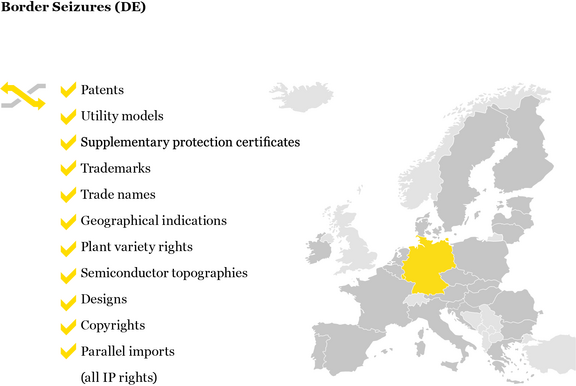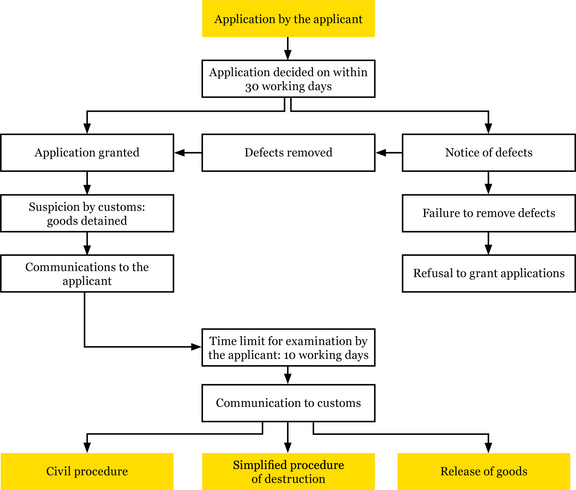IP Brochure
With successful border seizure applications, the import and export of goods infringing intellectual property rights can be prevented at the external borders of the EU or Germany. Border seizure applications are therefore a useful means of effectively enforcing industrial property rights, particularly in cases of infringement not yet identified. Furthermore, applications may be made in addition to bringing infringement proceedings before the courts. This brochure provides an initial overview of requirements and possibilities regarding border seizure applications.
Border seizures allow intellectual property right holders to prevent the import, export and sale of counterfeit goods in the European Union and Germany, without having to know the counterfeiters’ identity or whether the counterfeit goods are actually being sold.
At the same time, border seizures can also be an effective means of enforcing property rights against infringing parties known to the right holder, partly because the goods may be detained relatively easily at the external borders, and partly because successful seizure of the goods and imminent destruction may put the property right holder in a good position for settlement proceedings with the infringing party. The number of seizures by German customs officers is very high. Between 2019 and 2021, there was an average of over twenty-five thousand seizures, with over three million goods per year having a value of more than 225 million euros seized per year. Looking at the value of seized goods, personal items, e.g. jewelry, watches, glasses, bags, etc., topped the “hit list” in 2021. The majority of goods were seized due to trademark infringements, followed by design infringements, which have constantly been increasing. The main source of the goods is the Far East. The seizures are the result of close collaboration between the customs authorities and around nine hundred intellectual property right holders. In 2019, this included over 1,200 border seizure requests.




